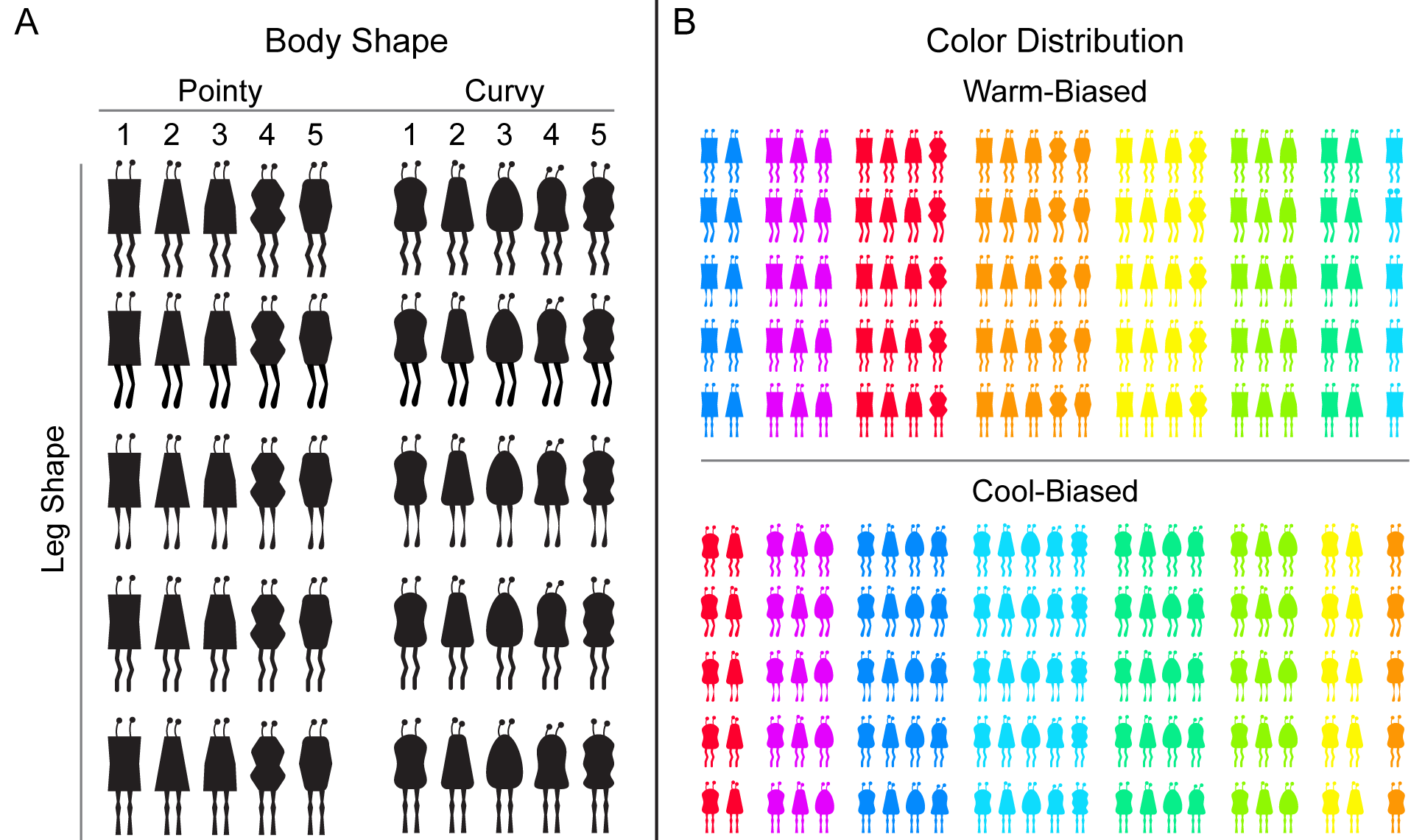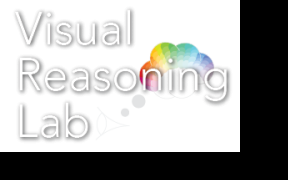Our new paper, “Color-concept association formation for novel concepts,” was published in Visual Cognition.
AUthors: Melissa A. Schoenlein and Karen B. Schloss

Color-concept associations influence fundamental processes in cognition and perception, including object recognition, color perception, and visual reasoning. To fully understand these effects, it is necessary to understand how color-concept associations are formed. It is assumed that color-concept associations are learned through experiences in the world, but questions remain concerning how association formation is influenced by properties of the input and cognitive factors during input. We addressed these questions by first exposing participants to color-concept co-occurrences for novel concepts (“Filk” and “Slub” alien species) using a category learning task. We then assessed color-concept associations using an association rating task. During alien species category learning, color was a noisy cue and shape was 100% diagnostic of species category membership, so participants could have ignored color to complete the task. Nonetheless, participants learned systematic color-concept associations for “seen” colors during alien category learning and generalized to “unseen” colors as a function of color distance from the seen colors (Experiment 1). Association formation not only depended on color-alien co-occurrences during the alien category learning task, but also depended on cognitive structure of color categories (e.g., degree to which an observed red color is typical of the color category “red”) (Experiment 2). Thus, environmental and cognitive factors combine to influence color-concept associations formed from experiences in the world.
Reference: Schoenlein, M. A. & Schloss, K. B. (2022). Color-concept association formation for novel concepts. Visual Cognition. PDF
